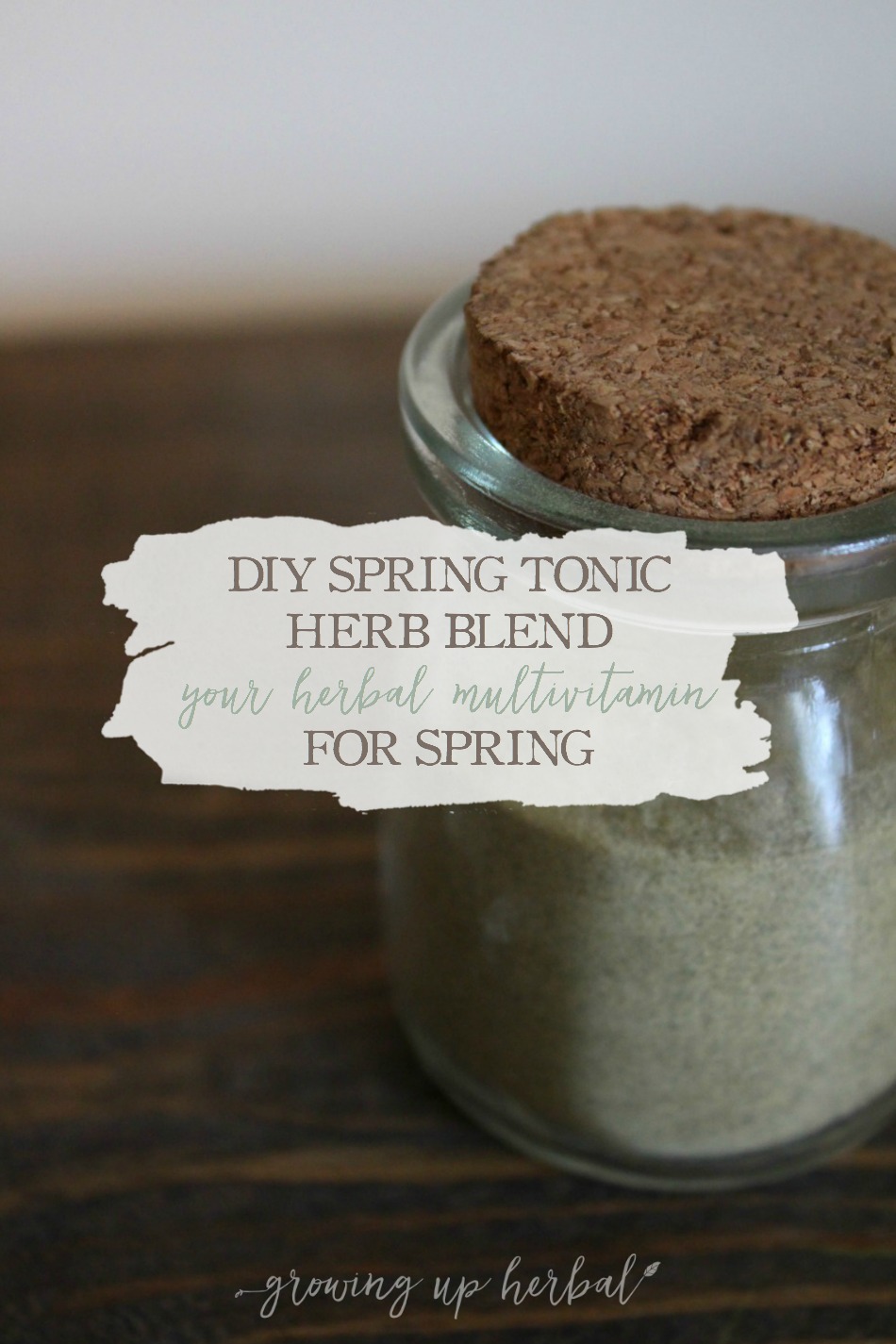
Spring is here. The sun is shining, the birds are singing, the plants are blooming, and the insects are out and about. Nourishment is moving underground, pushing up and out, to bring new growth and life back into the world. While nature is taking this nourishment and using it to grow, don’t you think it’s a good idea to take a clue from this process and do the same yourself?
If you’ve ever wondered if you should be using tonics for better health, you’re not alone. As an herbalist, I think herbal tonics are one of the best ways people can utilize herbs on a regular basis to support overall body health. Now that spring is here and plants are waking up from their long winter nap, this is a common time of the year to start incorporating these herbs into your life, especially spring tonic herbs.
In this post, I’d like to explain what tonics are and why they’re good for you, as well as when they should be used and how you can use them. While there are many tonic herbs, this post will be focused on spring tonic herbs. I’ll also be sharing a recipe for Spring Tonic Herb Blend and Spring Tonic Pastilles that you can use to get some of these herbs into your diet in a tasty way.
What Is A “Tonic” Anyway?
Tonics are herbs that nourish and build the body, its systems, and its organs, and these herbs are commonly used with someone is weak and run down; however, they can be used to maintain health as well.
Categories of Tonic Herbs
According to herbalist Michael Tierra, tonics can be separated into two categories—(1) those that nourish the body, and (2) those that stimulate the organs in order to bring them back into a state of balance.
The first group of tonics often contain herbs that are classified as nutritives, and this is the group that many spring herbs fall into. These tonic herbs can be taken in large doses for extended amounts of time and are generally recognized as safe. These are the tonic herbs that help to maintain health and have a general effect on the whole body.
The second group of tonics, however, tend to have a targeted effect on a specific body system or organ (ie: Hawthorn is a heart tonic, dandelion is a liver tonic, skullcap is a nerve tonic). Many spring herbs can be grouped into this category as well. These herbs normally follow recommended dosing guidelines and are only used until the body system is balanced.
Using Tonic Herbs
Tonic herbs are often used to help the body during the recovery period following an acute illness or to build energy back after a chronic illness.
An example of using tonics following an acute illness can be seen with influenza. If you’ve ever had the flu, it’s common to feel weak and run down for a day or so after the fever breaks. This is the recovery period of an acute illness and nutritive, tonic herbs such as nettle, can be very beneficial during this phase as they nourish the body and provide it with energy.
An example of using tonic herbs following a chronic illness can be seen with a pertussis (whooping cough) infection. With pertussis, the lungs are affected and weakened in varying degrees, and the recovery period can be long. This is an excellent time to use an organ or body system-specific tonic such as mullein to aid in strengthening this weakened area.
Tonics herbs can be used in a variety of different ways. They can be taken in tea form, made into a syrup, tinctured, and even eaten in foods which is what we’re going to focus on with the recipe below.
Spring Tonic Herbs
Spring tonic herbs are all herbs that start growing and are abundant in the spring—hence the term “spring tonic”.
Like I said earlier, in the spring, the energy of the plant begins to move from the roots up and out to form fresh leaves and stems. These herbs tend to have more nutrients at this point in their development than they do later on during the year, and when we use these spring tonic herbs, we benefit from that nutrition.
Spring tonic herbs not only give our body more nutrition, but they can also give our body a cleansing boost that it needs after a long cold winter. During winter, we tend to be less active and rest more. We also often eat heavier, protein-rich foods such as meat. Come spring, we have less energy and can greatly benefit from “cleaning house.” This helps us lighten up some and prepare for the spring season ahead.
Some common spring herbs are dandelion (Taraxacum officinialis), nettle (Urtica dioica), chickweed (Stellaria media), bittercress (Cardamine spp.), watercress (Rorippa aquaticum), lambsquarter (Chenopodium album), cleavers (Galium aparine), burdock (Arctium spp.), plantain (Plantago spp.), yellow dock (Rumex crispus), ground ivy (Glechoma hederacea), violet (Viola spp.), sorrel (Rumex acetosa), wild onion/garlic/leeks (Allium spp.), and more.
Where To Find Spring Tonic Herbs
If you’re adventurous and confident enough, you can forage for spring tonic herbs in your area. These herbs can be eaten fresh in salads, smoothies, and soups. They can also be dried and stored for later use.
If you’re not ready to wildcraft herbs, that’s fine too. You can order most of these herbs online in dried or powdered form. I prefer to buy my herbs in whole form (flowers, leaves, roots) as they have a longer shelf-life that way, but if I’m planning on making a large batch of the Spring Tonic Pastilles, I like to buy herbs in powdered form. Grinding herbs in a coffee grinder or in a mortar and pestle can be time-consuming and tiring, but it is doable.
Spring Tonic Herb Blend
Ingredients:
- 2 tablespoons dried nettle leaf, powdered
- 2 tablespoons dried plantain, powdered
- 2 tablespoons dried chickweed, powdered
- 1 tablespoon dried dandelion leaf, powdered
- 1 tablespoon dried cleavers, powdered
- 1 tablespoon burdock root, powdered
- 1 teaspoon dried yellow dock, powdered
Directions:
- Combine all herbs in a bowl and whisk well to incorporate everything together. (If your herbs are in whole form, place them in a coffee grinder to powder them. Grind off and on for 30 seconds at a time. Sift powders through a fine mesh sieve if you wish.)
- Label and store this blend in a glass jar in the freezer.
Spring Tonic Pastilles
Ingredients:
- 1/4 cup Spring Tonic Herb Blend
- honey or glycerine
- powdered spearmint (or other flavorful herb)
Directions:
- Add your Spring Tonic Herb Blend into a bowl and slowly add small amounts of honey or glycerin, stopping to stir regularly, until a stiff dough forms. You want to add the sweetener in small amounts because you don’t want the dough to become too sticky. If you add too much sweetener and wind up with sticky dough, you can correct this by mixing in more of your Spring Tonic Herb Blend until the dough stiffens back up. The ideal dough consistency is when the dough feels soft and can be easily rolled into a ball without losing its shape.
- Pinch off small pieces of dough and roll them into tiny balls. These Spring Tonic Pastilles are a bit on the bitter side. You can use them for herbal bitters before meals by chewing one 15 minutes before eating. However, if you simply want to take them for their tonic benefits and skip the flavor, you can swallow them whole. Just be sure you roll them small enough to swallow (about 1/4 inch round).
- Roll each ball in a bit of powdered spearmint to keep them from sticking to one another when stored and to improve their flavor.
Getting Kids to Take Their Spring Tonic Herbs
If you want to get your kids to take this Spring Tonic Herbs Blend, you have two options. First, you can make the pastilles even smaller so they can swallow them. If they’re too little to do that, then I’d suggest using this blend in place of the herbal mix that’s used in my multivitamin herb balls for kids. Kids love these multivitamin balls, and it will be easier to get them to eat it this way.

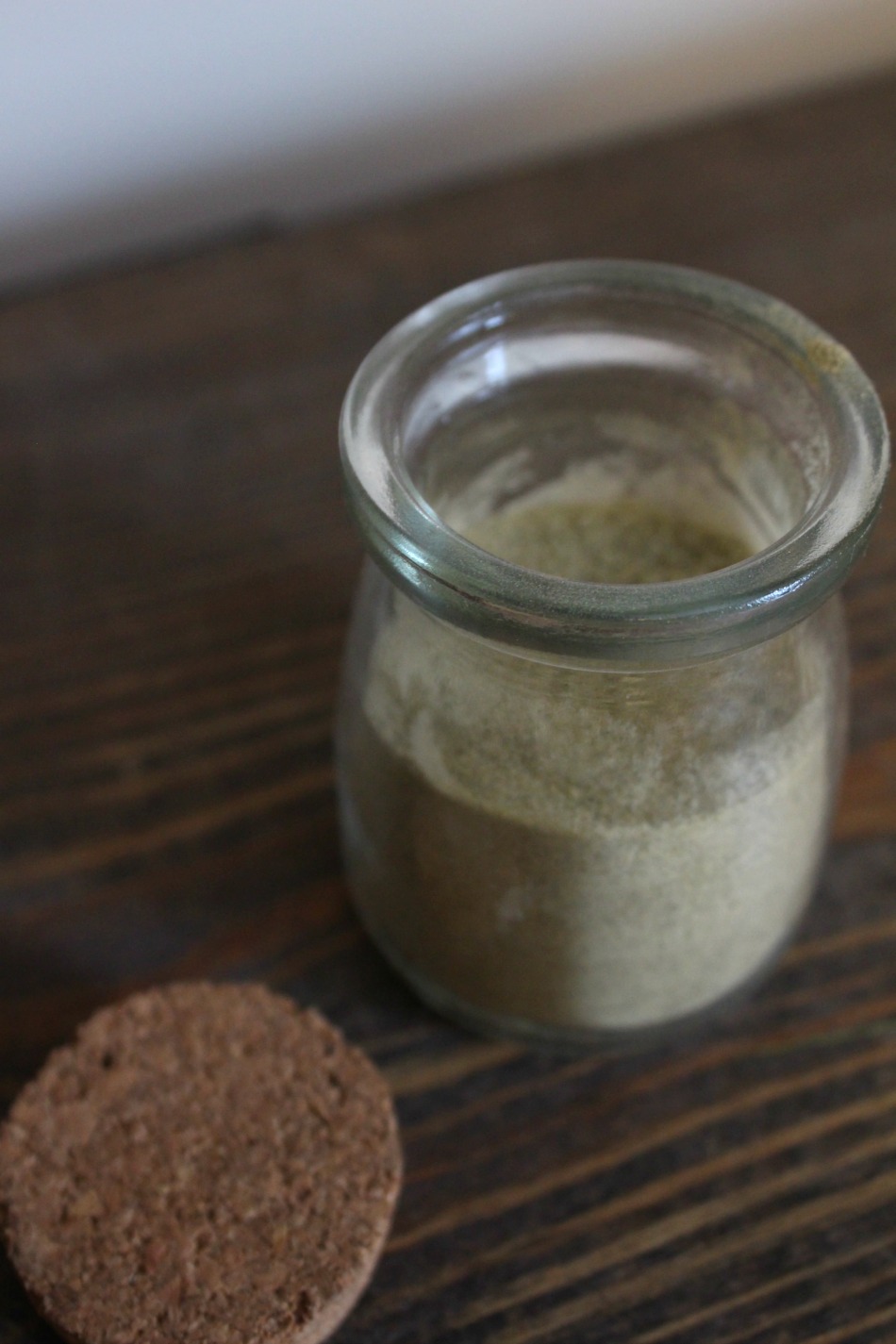
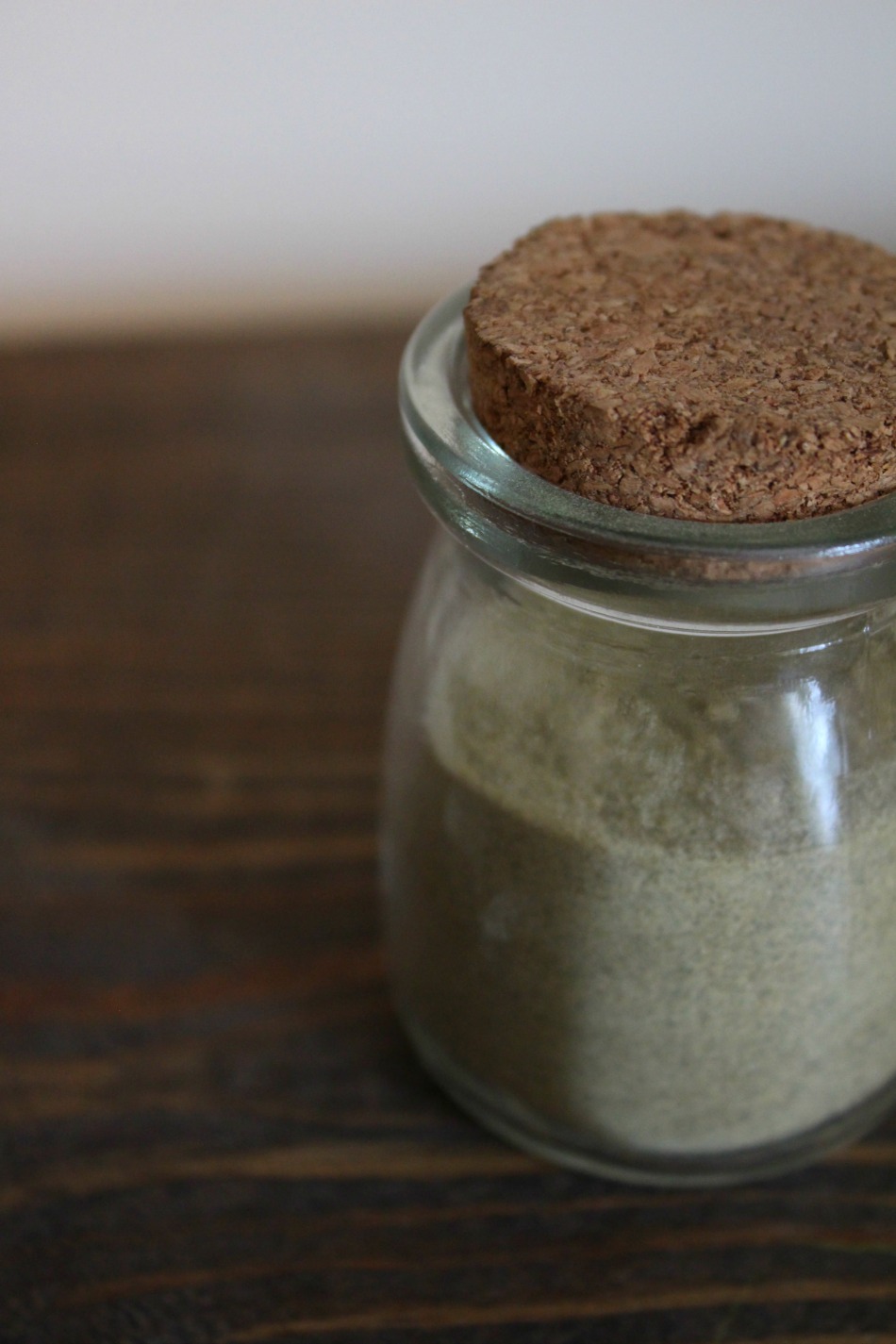

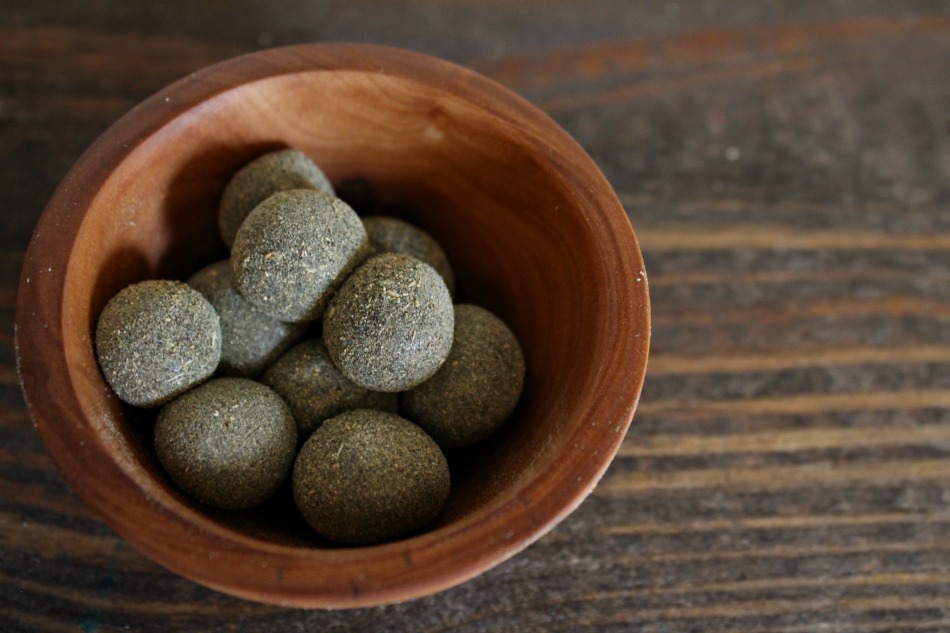
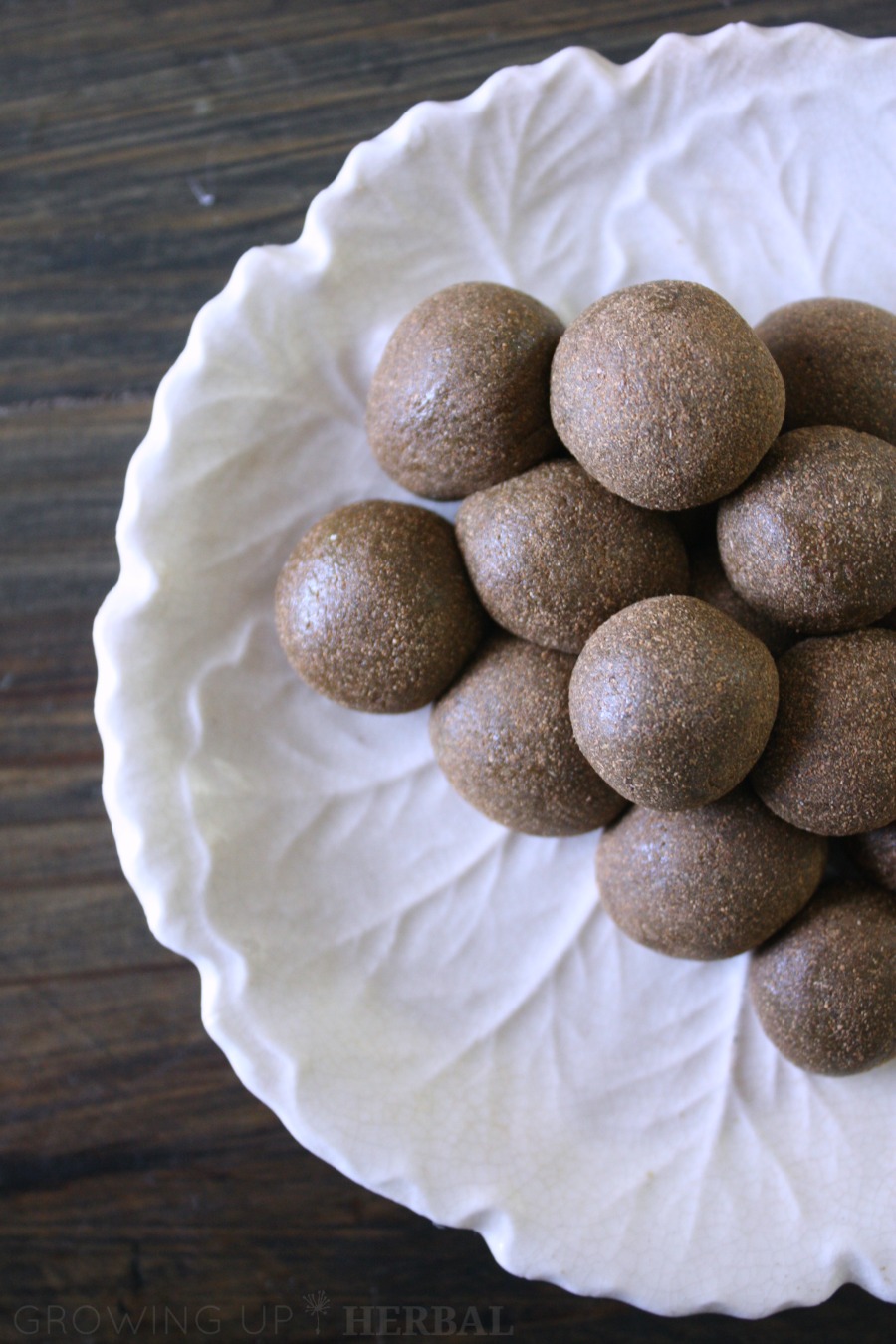
Great article! I LOVE making pastilles and do so ‘seasonally’ too! What a wonderful way to take our beloved herbal medicine! I make similar but have added dandy root and not ever been able to find yellow dock powdered — Wonderful classic tonic! Will share. Thanks. xo
Me too, Carol. Pastilles are some of my favorite ways to use herbs! I actually get a good bit of herbs from BulkHerbShop.com. They carry organic and wildcrafted herbs in whole and powdered form and in small sizes. They’re perfect for those times when I only need a little of something, and I can’t find it in my area.
5
Hello – just wondering if you have any herbal remedies to help with fatigue from Covid? And congestion…
Thanks!
One of the best things you can do after any illness during the convalescence period is to drink nutritive herbal infusions to help replenish your body with vitamins and minerals. This Lung Love Tea is a great one! Also making sure you’re getting plenty of protein in your diet is important, and of course, resting when you need to rest. Congestion is due to vasodilation of the tiny blood vessels in the tissues of the sinus region, which leads to inflammation of the tissues and that feeling of congestion. If you’re ill, this congestion usually subsides once your body heals, but if it remains, herbal astringent sprays can be helpful to use a few times a day to help tighten and tone the swollen tissues in the sinus cavity. Here’s my go-to recipe for my sinus rinse formula that you might find helpful.